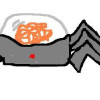-
buffalobuffalo
-
IHawkMike
-
TheInfamousOne
-
girsaysdoom
-
Wav_function
-
alt_xa_23
-
brown567
-
 andyburke
andyburke -
Gewgaw
-
12510198
-
the_post_of_tom_joad
-
sananibar
-
deegeese
-
Tippon
-
macarthur_park
-
 fadingembers
fadingembers -
Anderenortsfalsch